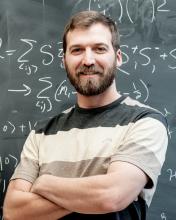In the last century, three distinct and important theories developed independently. One was the physics of solid-state materials, now ubiquitous in our computing devices; the second was the abstract information protocols used to program these computers; and the third was General Relativity, our current theory of gravity. As computers matured, the development of these theories grew too, fed symbiotically by advances both conceptual and numerical. Recently, the deep structures of these seemingly very different theories have been revealed to be unified. At the heart of this new unity is the strangeness of quantum entanglement, once dismissed by Einstein as inconsistent spookiness. What might spring forth from this entangled union? Who knows! But it’s already spawned the current best recipe for the next generation of computer, a goal pursued at a feverish pace by academia, governments, and the information-industrial complex.

